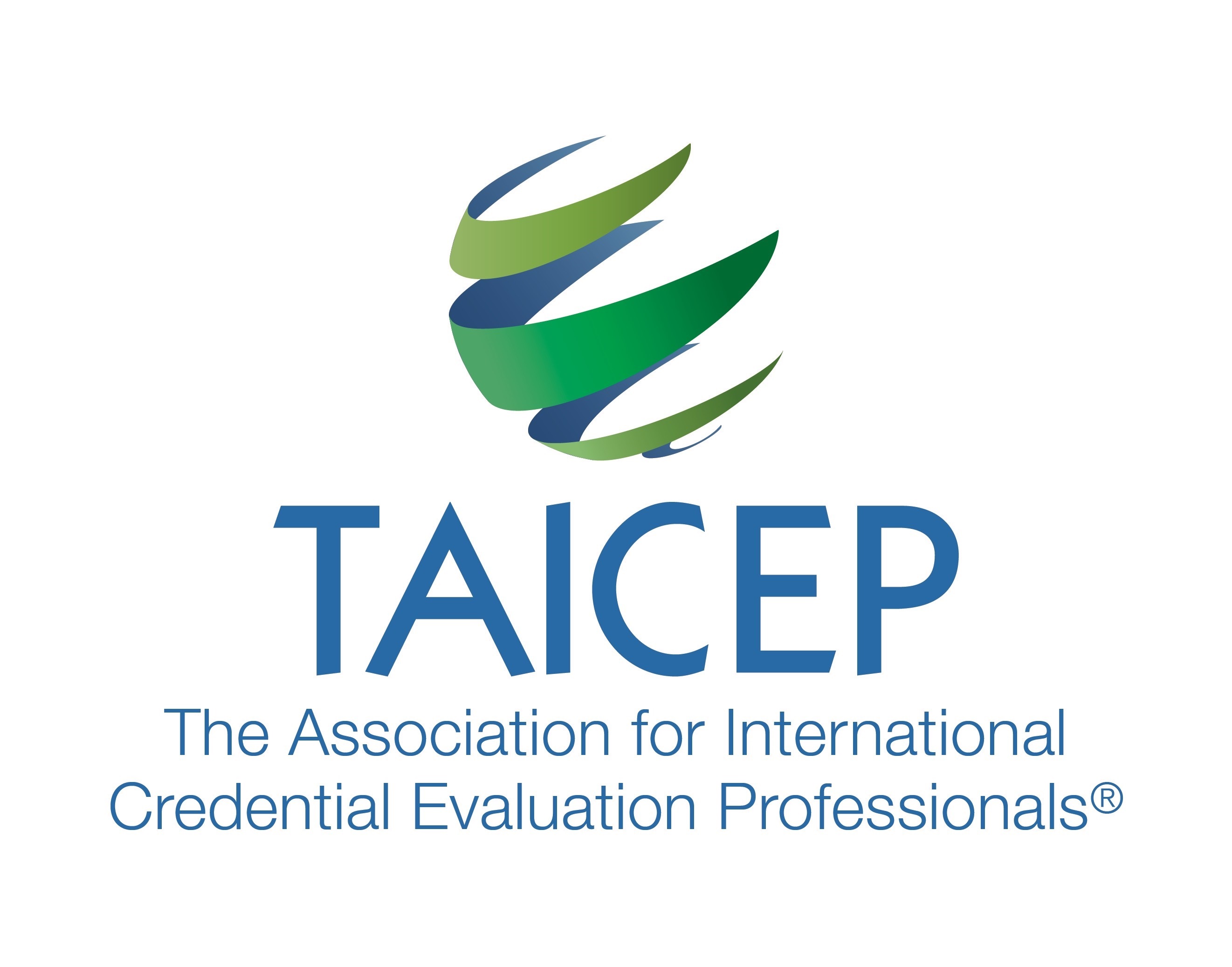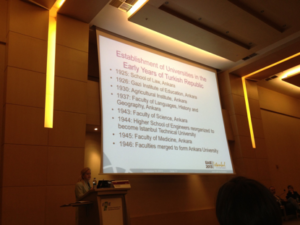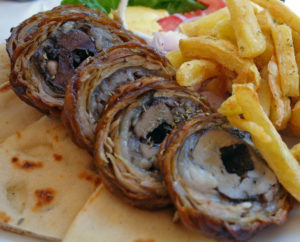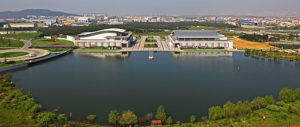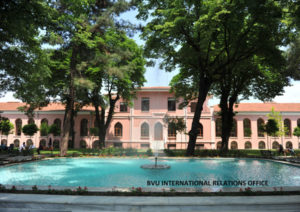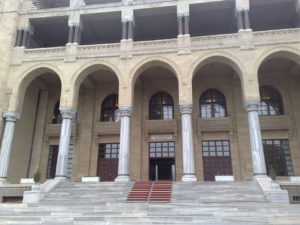Written by: Andres Arsalan, Swedish Council for Higher Education
Note from the Editor: The following article was provided by Andreas Arsalan from the Swedish Council for Higher Education as his personal reflections on the 2013 European Association for International Education conference in Turkey. In particular, he discusses the introduction to higher education in Turkey conference session and the campus tours to Turkish higher education institutions. The translation was conducted with the assistance of Google Translate, so any errors are as a result of this imperfect system.
Report from EAIE 9-14 September 2013, Istanbul
The conference was held in the district of Harbiye, one of the most exclusive areas of Istanbul, near the formerly well-known Taksim Square in Beyoglu.
Beyoglu is one of the oldest districts in Istanbul, a stone’s throw from the Gezi Park (promenade), which created headlines in world pressures in connection with recent protests against government plans to change the appearance of the park. Beyoglu “The Son of the Lord” (own translation) was traditionally an upper class area, hence the name. Here lived wealthy Greek businessmen with higher education and a sense of art, music, architecture, etc. Beyoglus’s sidewalk is still rich in bars, live traditional music, small and large restaurants serving both alcohol and very traditional Greek-Turkish dishes, such as Kokorec (Greek cocoa sauce, Κοκορέτσι).
Kokorotsi is a kind of barbecue kebab made of kotarmar served with plenty of spices and traditional strong sauces. I can guarantee that Kokorec with a glass of beer is still as delicious as it was in the 1980s, and quite harmless, which meant I could not skip it when I visited Cicek Pasaji, located near Galatasaray University, in Bryoglu on an afternoon.
At the time, the 2013 EAIE was probably the most attended so far; Reportedly around 5,000 participants from around the world. Of these, 19 employees were from UHR.
To me, as the one responsible for the assessment of academic education from Turkey, it was a great opportunity to immerse myself in the education system of the country and create new contacts with the relevant institutions associated with higher education.
Sweden, and Swedish universities, are not at all unattractive in some parts of the world. During a major meeting at an intermediate university, Sweden and a few Swedish universities were mentioned at least three times. Lecturers were concerned about the Swedish university’s “unwillingness” to receive students from Turkey as well as student fees.
The biggest and perhaps most instructive session at the conference
For my part, Tuesday’s lecture on 10/09 on the Turkish education system was one of the most rewarding presentations of the entire conference. It felt like the lecturers had read our manual on the Turkish education system in the assessment portal and made it complete with new updates and reforms in the education system in the country.
Assistant Professor at Middle East Technical University (ODTU) Aysegul Dalaoglu told about the Turkish higher education from a historical perspective. The foundation of the Turkish higher education goes back to “Madrasa” in the 1400’s during the Ottoman period which read religion, philosophy and law. The system, based on recitation of texts, no longer worked in the 20th century. It was thought that the madrasa system was no longer scientific and therefore recruiting scientists from, among others, Germany. In 1912, “Dar-ul-fununi Osmmani” was transformed into Istanbul University and in 1923 all Madrasa schools were closed in the country.
Taner Bilgic, rector of Bosphorus University, confirms the influence of the Western world on Turkish education and adds that in the 2nd World War (both before and during the war), many scientists fled from Europe to Turkey, and Turkey was happy to receive them for “the good of the country” because Turkey lacked modern scientists during that time. The Turkish education system has also been influenced by the United States Bilgic said. This includes the former Robert College, now the Bosphorus University, which was founded in 1863 by the Americans Christopher Rhinelander Robert and Cyrus Hamlin. The university was initially named “Robert College” after one of the founders.
According to Bilgic, the former owners donated Robert College to the state of Turkey in 1971. But in reality, the College was nationalized and renamed the Boğaziçi University (also known as Bosphorus University) by the then-government led by the military after a coup.
Even METÜ, Middle East Technical University, which is a so-called state university, is much more American than Turkish. Like Bilkent University, the first private university in the country, METÜ also has English as the language of instruction.
No matter what system a university belongs to, from Istanbul University which is the most traditional, to Sbanci University that designates itself as the most free and modern, the Turkish education system generally has a 3-cycle system: 4 + 2 + 3 and is centralized. All universities have courses in “Ataturk’s revolution history” which are compulsory in all programs.
Dr. Armagan Erdogan of the Council of Higher Education (YÖK) began his part of the presentation by saying that the education system in Turkey is centralized and that the higher education is administered by YÖK, Yüksek Ögretim Kurulu (Higher Education Council), based in Ankara, while school education, from primary school to the last year of high school, is regulated by the Ministry of National Education, the Milli Egitim Bakanligi.
YÖK was established in 1980 and changed the whole system from being decentralized to standardized and uniform throughout the country, both for private and state universities. Full responsibility for higher education was put on YÖK which was affiliated directly to the country’s presidency and financed by the Ministry of Finance.
Turkey has 184 universities with a number of university colleges affiliatied to the universities. 40% of universities are private universities and 60% state. A total of 4.5 million students are studying at these universities and colleges.
According to Erdogan, the current government aims for new reforms in higher education (without mentioning what reforms), but in order to do this a legislative amendment is needed. Priority number 1 is, according to Erdogan, internationalization of curricula. See picture of “Policy Tools” taken from Erdogan’s presentation as a method of internationalization.
Charges for international students are determined by YÖK for state university and by university management for private universities.
Entrance examinations for admission to universities are centralized and mandatory. The exams are administered by an authority that is connected to YÖK. 1.8 million students take these examinations every year. However, universities only have space for 1/6 of the participants. Standards for admission are determined by YÖK.
Campus Tour, to Sabanci University
Sabanci University is a private university and is owned by a holding company of the same name. The Sabanci family is one of the richest in Turkey. The university was founded more than 15 years ago (1999) and today has 3200 students at the undergraduate and approximately 800 at postgraduate level.
On the way to the university, which is on the other side Bosphoros on the Anatolian side, I sat in one of two buses next to a person from a university who worked with exchange issues. The person wanted to know a lot about the Turkish education system and the political situation in the country and was glad to sit next to one from UHR who could explain it. The journey began at 9 am through Istanbul’s relatively new fresh suburbs, across the bosphorus bridge and through the beautiful part of Antolia which constitutes a coastline against and binds Europe with Asia. I did not want to talk politics and/or training during the short trip, but I did it reluctantly. If we have judges once sworn oath to enlighten university people about the education systems of different countries, we have joined the eden for all future.
Once at the university, we were received by staff from the university and were led through several corridors to a room immediately adjacent to the university auditorium. There was coffee and tea as well as salted and sweet cakes already served. It was a good time to connect with other conference participants.
The most serious work began with a short welcome speech by the headmaster inside the auditorium. The headmaster is trained as an engineer in the United States and taught himself the subject. He modestly stressed that the university is one of the most modern and successful country. The university is “different from other universities in many ways”; it is a “human being and student focused university”.
In both English and Turkish, one of the university’s vice-principals advertised the university in the best way. She studied both in China and Japan, and wanted to remind us of this several times. She gave several examples of how they conducted training in these countries and Sabanci have some methods from there.
The studies during the first year of education are general education at Sabanci, regardless of the program and the orientation they have been accepted, and the students take courses in the academic program they have been admitted to only in the second year. I suppose they want to pursue 3-year Bachelors, but they should not do so after the country’s education system requires 4-year Bachelors. Approximately fifty percent of the students complete the program they have chosen from the beginning, and the rest change programs. Students can skip master’s programs and begin postgraduate studies directly after a 4-year bachelor degree “Lisans”
The first and the general year contain courses that are not always necessary for all and many do not study them later. Everyone should take “civic instrument projects”. These projects include tasks such as visiting prisons to teach the prisoners in language.
Many students live with their families at the student apartments owned by the university. Even some Faculty members live in dormitories with their families.
International offices usually have a very large and important task at such universities. Therefore, it was this office’s turn to provide us with information about its activity in the afternoon. According to the person in charge, they direct most of their activities most towards the Islamic world; Iran, Pakistan, Afghanistan, Indonesian, Arab world, etc. “Parents want to send their children abroad to study and choose a safe country with Muslim traditions,” the presenter told us.
Turkey is the fifth largest country in the world exporting students through Erasmus. This year there are 50 plus students from Sabanci University who have traveled abroad through Erasmus. Sabanci does not release students before they have chosen their “major”. They are released only during the second half of the third year and the first half of the 4th year.
16% of the students go to the Netherlands. An equal number goes to Sweden. Students receive grants to study abroad. The state also contributes to the students who come here for exchange studies.
However, the presenter states that it is very difficult to send students to European countries for exchange and research. The easiest country to cooperate with is the Netherlands, and to a certain extent, Sweden. He mentions Uppsala University twice and praises the students who have been there and come back. He was disappointed with the Swedish government’s decision regarding fees for students from non-EU countries.
Sabanci University receives exchange students from 38 different countries. The largest groups are from Pakistan, Iran and Iraq. Students from the EU countries are mostly students with Turkish background and the occasional student from other ethnicities who study languages and Ottoman studies.
The last activity consisted of a tour of university buildings and various faculties as well as research centers.
Another session was also one that concerned students from Turkey and students with a Turkish background studying at universities in Austria, Germany and the Netherlands.
According to this non-scientific survey conducted simultaneously in Germany, Austria and the Netherlands by the person employed at the Ministry of Education in Austria, DAAD and VU University in Amsterdam, the results were strikingly similar. According to the report, the students who came from Turkey to study were more successful and completed their studies without any problems. These showed more tolerance towards students with other nationalities and were clearly more secular than those living in these countries. Guest students had no difficulty communicating with other students and had no problem socializing with other students because of “reverse religious Reasons”. Guest students could learn to perfect the language (German and Dutch) and were “determined” to study without any social or religious values.
The lecturers’ analysis of why this could happen was that the guest students might belong to another social stratum and that they had a true picture of their home country to compare with the country they studied.
The number of students with a Turkish background was underrepresented in all three countries. In Austria, for example, only 1.6 per cent of all students studying at the university had a Turkish background. This is a very low figure compared to the population in general. Turks are the largest single minority in Austria.
A session “Stepping into the Middle East and North Africa”
This session was mostly about recruiting students from the Middle East and North Africa countries to Australia. It was not relevant to my needs. The presenters noted that there are very great lack of places in universities in some countries in these regions, and they (from Australia) invested a lot of resources in recruiting students from MENA countries.
Bezmialem University
I chose to meeting with representatives from two specific universities. One university is relatively new and has a special profile, and the other is a large, relatively old institution that we get many requests from.
Bezm-i Alem is an Ottoman term and means “world council” or “world meeting”. Bezm-i Alem Sultan was also called the Sultan Abdulmecid’s mother.
The university is relatively new and belongs to the private sector (probably a university belonging to the so-called Gülen movement).
The main purpose of the founding of the university, according to the representative, is to attract students with a Turkish background who are living Europe. The university is located in Istanbul and lacks other branches. It is most vocational courses offered but also studies in culture, language and religion. Medical studies and other healthcare programs are dominant. Ottoman studies, which are not usually found at universities in other countries in Europe, are also included in the university’s profile.
Gazi University
The purpose of the meeting with a representative from Gazi University was to create direct contact with the university. However, I was looking forward to asking general questions about YÖK and its relationship with universities, as well as teacher education in the country.
Her answers about YÖK and teacher education were very careful and vague, but I realized that everything was governed by the current government against a particular direction. It is not certain that everything will stand as it is now if the country gets another government.
Meeting with Turkish NARIC-ENIC
I had booked a meeting with Turkish Naric-Enic in advance and we (Malin and I) were well prepared with a battery of questions. I was disappointed after the meeting.
When we met colleagues from Turkish Naric I saw that they were surprised and not at all prepared for the meeting. They suggested that we hold the meeting at their booth at the fairgrounds and we had no choice but to accept the proposal. We were disturbed by all the people who came and asked questions (to exhibitors from the host country for the conference). But mostly I was disturbed by an American with a New York accent who finally came and parked right where we sat and had a meeting.
We were most interested in knowing more about quality assurance, specifically if there were any differences in quality and status at the private and state universities, university status and quality assurance at universities in northern Cyprus, etc.
We received no more information than we already had. And when we asked sensitive questions about YÖK versus university in northern Cyprus, we were referred to higher ups within YÖK.
Conclusion
For me it was a very fruitful meeting and I got the information needed for the country’s education system, and I got confirmation of what I already knew.
The contacts with representatives from universities, and indeed the Turkish Naric-Enic were good and necessary.
Turkey is generally a country run a little differently than we commonly see in countries in the EU area and everything is hierarchical within the state administration.
The initial conferences on the Turkish education system and the “Campus Tours” were excellent and gave a comprehensive picture of the country’s education system.
See more from this Edition:
President’s Message: July 2017 Edition
Turkish Council of Higher Education: July 2017 Edition
Evaluating Credentials with a Global Mindset: July 2017 Edition
Building a Resource Library, Part II: July 2017 Edition
TAICEP News and Updates: July 2017 Edition
Sample Russian Credentials: July 2017 Edition
Add to your Library: July 2017 Edition
Opinion: Theological Schools / Bible Colleges July 2017 Edition
Industry Information, News Articles and Journals and Publications: July 2017 Edition
Foreign High School Credentials – A Very Basic Overview: July 2017 Edition
In Memoriam: Drew Feder July 2017 Edition
2017 Conference: July 2017 Edition
Conference and Organizational Sponsors: July 2017 Edition
